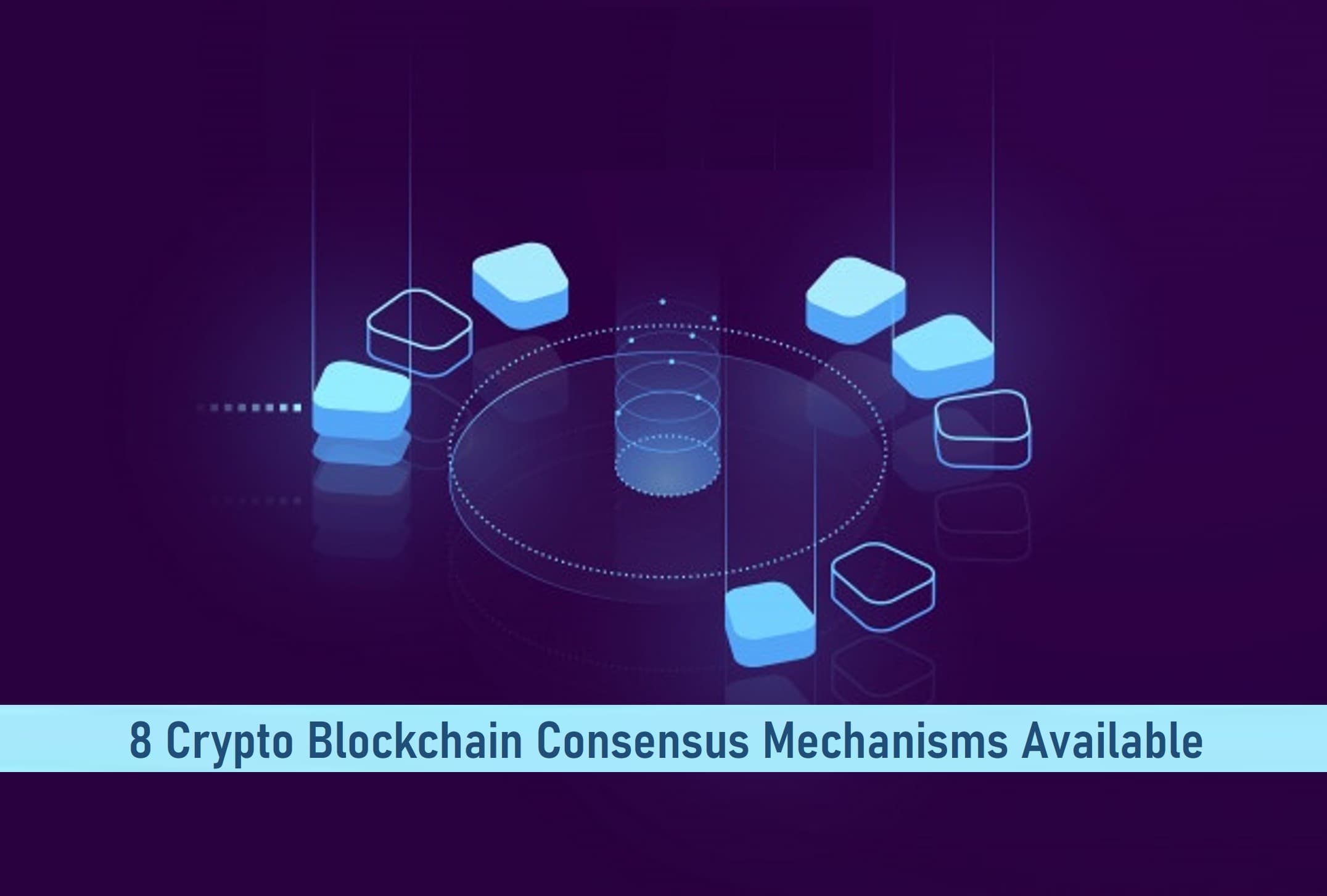
With the competition for scalability, faster payments and better user experience, the blockchain framework in which new tokens are built or run deviates a bit from the conventional Proof-of-work (PoW) consensus mechanism Bitcoin is known for.
With Ethereum 2.0 planning to adopt the Proof-of-stake (PoS) mechanism soon, newer coins are shifting the borders with better technological blockchain ideas that are offering faster transaction speeds and functionalities.
In this article, I will explain the different types of blockchain consensus mechanisms asides from the two well-known ones (PoW & PoS) earlier mentioned.

Key Takeaways
• A miner earns a block as a reward for solving mathematical problems if they are the first to find the solution. Proof-of-work is a trial and error validation process done at great speeds known as hashing.
• Validators are often compensated for their efforts by receiving all or a portion of the transaction fees from any transactions carried out in the block they produced.
Below are the eight known blockchain consensus mechanisms:
1. Proof of Work
The Proof of Work (PoW) consensus mechanism adopts the procedure where a miner or validator shows to everyone evidence of the transaction he has successfully added to the public ledger. The proof of work is what is required to legitimately earn a reward for exerting computational mining power on the mining activity.
Under PoW, miners are referred to as nodes. Miners tackle complex mathematical challenges that need a large amount of processing power known as hashing.
Miners use a variety of mining technologies for this goal, including CPU mining, GPU mining, FPGA mining, mining pools, ASIC mining, and others. A miner earns a block as a reward for solving mathematical problems if they are the first to find the solution.
Furthermore, the problems can only be solved via trial and error. As a result, miners need an increasing amount of processing power to identify answers rapidly.
SEE ALSO: What You Need to Know About Proof-of-Work Consensus Mechanism
2. Proof of Stake
Proof of Stake (P0S) uses a randomized mechanism to determine who is eligible to create the next block. Blockchain users may lock up their tokens for a set period to become validators.
Users may be able to create blocks after becoming validators. Validators can also be chosen depending on the blockchain’s architecture.
In general, the person with the largest stake or who has owned coins for the longest time has a greater chance of establishing a new block.
Validators are often compensated for their efforts by receiving all or a portion of the transaction fees from any transactions carried out in the block they produced.
Alternatively, validators may get a certain number of coins as a result of inflation. With this strategy, the Proof of Stake mechanism incentivizes validators to keep the blockchain network running.
Proof of Stake uses less energy than other blockchain consensus processes such as Proof of Work.
3. Delegated Proof of Stake
Users can stake their coins and vote for a certain number of delegates in the Delegated Proof of Stake procedure.
A user’s vote is weighted based on their investment. For example, if a user ‘X’ spends 20 coins for a delegate while another user ‘Y’ invests 2, X’s vote will be more weighted than Y’s.
The delegate who earns the most votes is allowed to create additional blocks. Delegates, like other blockchain consensus processes such as Proof of Stake, are rewarded with transaction fees or a set quantity of currencies.
4. Proof of Capacity
Solutions to complicated mathematical riddles are stored in digital storage devices such as hard drives using the Proof of Capacity approach. This entire procedure is known as planning.
After a storage device has been populated with answers to mathematical problems, users can use it to create blocks. Users that find answers the fastest are allowed to design a new block.
As a result, those with the most storage space will have a greater probability of manufacturing a new block.
5. Proof of Elapsed Time
The Proof of Elapsed Time mechanism determines the producer of a new block at random and fairly based on the time they have spent waiting.
For this aim, the method assigns each user a random wait time, and the user whose wait time expires first produces a new block.
This consensus process is only effective if the system can verify that no user is running multiple nodes and that the wait time is genuinely random.
6. Proof of Authority
The Proof of Authority technique is a modified form of Proof of Stake in which the identities of network validators are at stake.
In this case, identity is the relationship between the validators’ identity and their official papers, which aids in the verification of their identity. The network’s reputation is on the line for these validators.
The only nodes authorized to create new blocks in Proof of Authority are those that become validators.
Validators whose identities are at stake are incentivized to protect and safeguard the blockchain network. Furthermore, the number of validators is rather minimal (i.e. 25 or less).
7. Proof of Activity
The Proof of Activity mechanism combines the Proof of Work and Proof of Stake mechanisms. Miners compete in Proof of Activity to solve a riddle and earn their prize.
The blocks generated via the Proof of Activity method, on the other hand, are basic templates containing the mining reward address and header information.
The header data is then used to choose a random set of validators to sign a block. Validators with more stakes have a better chance of being chosen to sign a new block. When the chosen validators sign a new block, it is added to the network.
If some validators find the block to be unsigned, it is deleted and a fresh block is used. The network fees earned throughout the process are split between the winning miner and the validators.
Despite having identical aims, different blockchain consensus techniques achieve consensus in different ways. There is no one solid consensus mechanism, but current ones have evolved to match the demands of blockchain technology.
Furthermore, because the underlying technology is still relatively new, identifying the sort of blockchain consensus mechanism that will be popular and beneficial in the long term might be increasingly difficult.
As a result, business executives who want to implement blockchain technology in their firm should be well-versed in the different blockchain consensus processes.
8. Proof of Identity
Proof of Identity compares a user’s private key to an authorized identity. Proof of Identity is essentially a piece of cryptographic proof for a user’s private key that is cryptographically associated with a specific transaction.
Any recognized user in a blockchain network can generate a data block that can be offered to anybody else in the network.
Proof of Identity assures the data’s integrity and validity. Furthermore, smart cities can leverage blockchain consensus techniques such as Proof of Identity to validate their citizens’ identities.
Frequently Asked Questions (FAQs)
What is the most common consensus mechanism?
The most common consensus mechanisms are Proof of Work (PoW), Proof of Stake (PoS), and Delegated Proof of Stake (DPoS).
Many additional consensus techniques have been created since the advent of Proof of Work (PoW), which enabled Bitcoin. Some are more successful than others, and each has its own set of characteristics.
What function does distributed consensus play in the blockchain?
A distributed consensus achieves data consensus across distributed system nodes or obtains an agreement on a proposal.
Final Thoughts
Blockchain mechanisms are very important as they serve a vital role in the affairs of cryptocurrencies.
Today, there are different types of blockchain mechanisms being utilized by different cryptocurrencies. Proof of Work and Proof of Stake are popular examples of these mechanisms.
Read More




